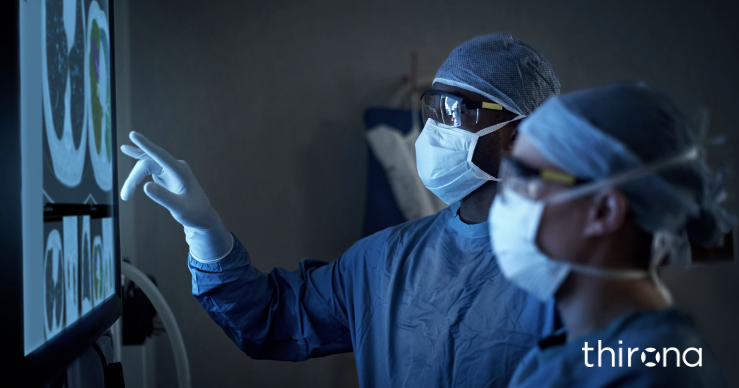
What You Should Know:
– Thirona, a pioneer in AI-powered lung analysis, received a major boost for its cutting-edge technology LungQ™ with the U.S. Food and Drug Administration (FDA) 510(k) clearance for its latest update, v3.0.0.
– This FDA clearance paves the way for American hospitals to now harness the software’s advanced capabilities, marking a significant step forward in lung disease diagnosis and treatment.
LungQ 3.0.0: Precision Navigation for Lung Interventions
This latest iteration stands out as one of the few FDA-cleared solutions capable of automatically segmenting and analyzing the intricate landscape of the lungs’ internal anatomy. Its AI prowess goes beyond mere mapping; it identifies key structures like lobes, segments, subsegments, airways, and fissures, allowing for:
- Detailed tissue analysis: LungQ meticulously evaluates lung tissue and fissure completeness, supporting accurate diagnoses and documentation of pulmonary conditions based on individual CT scans.
- Minimally invasive interventions: By providing a comprehensive “map” of the lungs, LungQ guides bronchoscopic navigation with unparalleled precision, enabling safer and more effective procedures like lung cancer biopsies and volume reduction therapies.
Revolutionizing Lung Care, One Segment at a Time
Eva van Rikxoort, Thirona’s Founder and CEO, emphasizes the impact of this technology: “Clearer lung anatomy opens doors to minimally invasive treatments, preserving lung tissue and function. LungQ acts as a guide for bronchoscopy, paving the way for a new era of personalized lung care.”
With over 600 hospitals and 200 publications already leveraging LungQ’s power, the FDA clearance marks a pivotal moment for its global reach. Hospitals in America can now join the wave of healthcare providers reaping the benefits of this innovative technology, ultimately leading to better outcomes for lung patients everywhere.
Thirona’s LungQ 3.0.0 is a testament to the transformative potential of AI in healthcare. By offering a deep-dive into the lungs’ hidden landscapes, it paves the way for a future where personalized, minimally invasive lung care becomes the norm, delivering hope and better health to millions.
